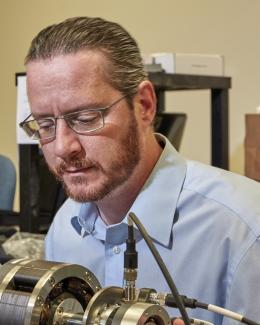Abstract
The electron cyclotron heating system (ECH) on ITER uses 24 microwave beams of up to 1.4 MW of power each at 170 GHz to provide resonance heating of electrons in the ITER plasma and to enable plasma current drive. A critically important component in this system is the microwave switch that allows the beams to be directed from the gyrotrons to either dummy loads or between launchers in the upper and equatorial ports of the ITER tokamak while maintaining the vacuum integrity of the transmission lines. The entire ITER ECH system requires 56 switches. The internal RF passages of each switch are corrugated to match the waveguides. A moveable, water-cooled CuCrZr mirror is used to redirect the microwave beam orthogonally with less than 0.40% power loss. The switch has two positions controlled by pneumatic actuators. It can be opened for straight through transport, or the mirror can be inserted to intercept the beam and create a 90o bend. An elliptically polarized 1.4 MW beam will deposit a peak heat flux of 2.2 MW/m2 on the mirror surface. The absorbed power must be removed by active water-cooling for the maximum 3600 s pulses at 25% duty cycle and survive 20 years of cyclic operation.
In this article we describe the optimized design of the mirror cooling passages produced by computational fluid dynamics analysis using ANSYS CFX with k- and k- shear stress transport turbulence models, and verify that the design parameters for mass flow rate, inlet temperature and pressure are adequate for good thermomechanical performance. Non-uniform heating of the mirror face from the incident microwaves induces deflections that must be less than 25 microns to meet the integrated transmission line efficiency specification. In the current design for a 1.4 MW beam, 0.03 kg/s of 36 oC water at 10 bar inlet pressure can remove the 2660 W circular polarization power and maintain the surface temperature below 150 oC. The water delta-T is 21 oC with a 0.5 bar pressure drop in the mirror. The maximum predicted displacement in the mirror face is less than 25 microns.




